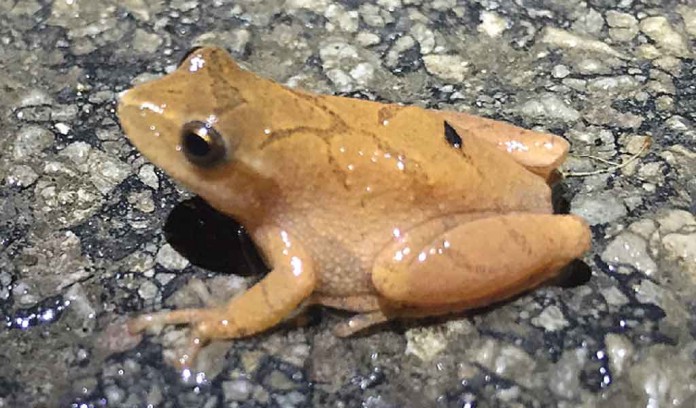
Vernal is Latin for “of, or relating to spring.” Besides summer, spring is my next favorite season of the year.
I love the return of the green to the landscape, sounds of birds and spring peepers, longer daylight hours and yes, even those warm wet evenings.
If it hasn’t already happened, it won’t be long before we see a bunch of frogs and toads on the back roads, crossing at night, and even some of us may still see small salamanders squiggling to make it across a road, drive or field.
I actually swerve to miss frogs, and have been known to go down another road to avoid heavy frog/toad traffic on warm wet nights.
Spring migration
More about vernal pools:
Vernal pools come to life in March
Have you ever wondered why these amphibians are out this time of year and what they are up to? Well, the answer to them is quite simple. … it’s migration to a special breeding ground.
Most people don’t recognize or pay attention to the little things in life, like bees, butterflies, toads, frogs, salamanders and small seasonal wet areas. But these things are crucial in the big picture of nature.
They are headed to a special place called a vernal pool.
Special Place
Vernal pools, or seasonal pools, are a unique type of wetland habitat. They are typically small and shallow, and are filled each spring by rain and snow melt, then dry up for a period of time during the summer.
The dry phase of a seasonal pool prevents fish from getting established. In a habitat free of top predators, other animals such as the Jefferson Salamander, Spotted Salamander, Tiger Salamander, American Toad, Wood Frog, Chorus Frog, Leopard Frog and Spring Peeper have thrived in waters rich with Fairy Shrimp, plankton, algae and protective cover.
Vernal pools
I know there are many times I have been out in a field walking, in a forest with a group of school kids or I even recall when I was a kid, exploring a “wet spot” or low area that always flooded in the spring; and now I know that “wet spot” was actually an important vernal pool.
These small animals migrate there each spring to mate and lay their eggs and without the threat of fish or large birds, the tadpoles and baby salamanders can be born and go back to their earthen habitat with a high survival rate.
Vernal pools are considered ‘isolated’ wetlands because they are not permanently connected to other water bodies.
Location
Vernal pools can be found as shallow depressions in an upland area, associated with a wetland complex in a low-lying area, or in the floodplain of a stream or river.
Historically, vernal pools were found in forested landscapes and are most natural in this condition. Today, many are found in open areas such as agricultural fields and residential areas.
I often worry that many people will not know about these important seasonal wetlands, and when they buy a piece of property and want to “improve” it or build on it, the first thing they want to do is fill in the depression, or wet area that occasionally floods, and clean up the brushy vegetation.
Important habitat
Please do not destroy this important habitat! Recognize it and save it.
If you have ever wondered why toads, frogs and even salamanders would be in your backyard or crossing the road; perhaps your home, subdivision, or farm field has been placed in the path of their instinctual migration route to a vernal pool mating habitat that you never even knew existed.
Don’t ruin their habitat; instead, help them survive. Be in the fighter’s corner. Just like any athlete or fighter, they always have a trainer or a support team to help them accomplish their goal.
These amphibians — the toads, frogs and salamanders — need you in their corner. So do the Monarch Butterflies, and all the pollinators that are also battling against the loss of habitat and the loss of precious milkweed.
Be proactive; educate yourself and others about these important temporary wetlands called vernal pools. Don’t do things to demolish or alter the wet area, and keep natural vegetation (not turf grass) around the pool.
Leaves, stems, weeds and grasses help provide protection in the water and out of the water when the young move to their upland homes.
Drive carefully
Stop the vehicle. Don’t run over these little critters. Go another route. Use a mulching blade on your lawn mower (all natural) instead of using chemicals or fertilizers.
Plant native flowering vegetation, and milkweed, and don’t mow it! Keep a buffer near any water’s edge.
And finally, this Earth Week and spring, please realize we must accept the gift of water. Appreciate it, along with the flora and fauna that also inhabit this planet, and do your part to keep everything you can clean and protected.












